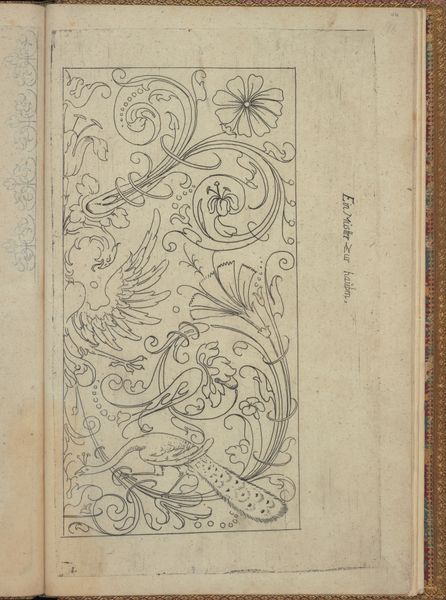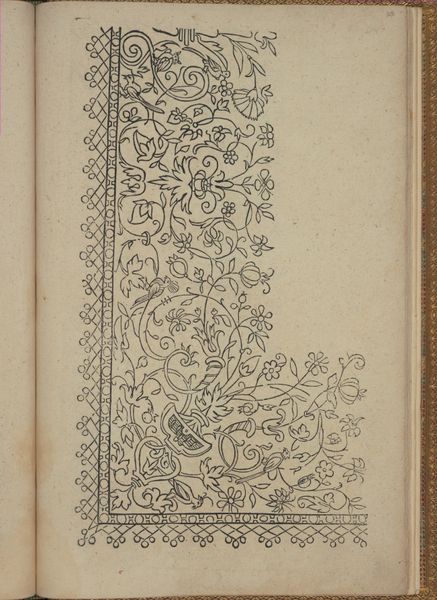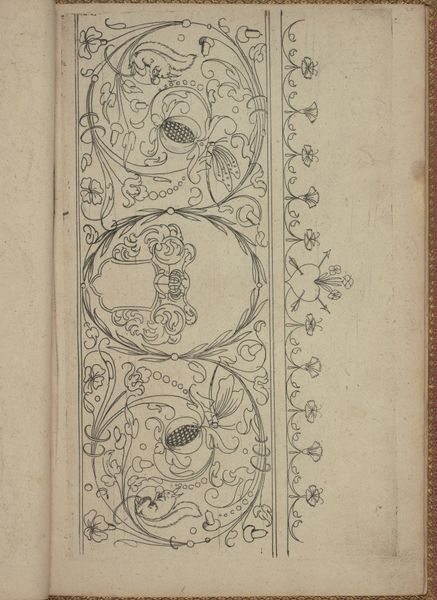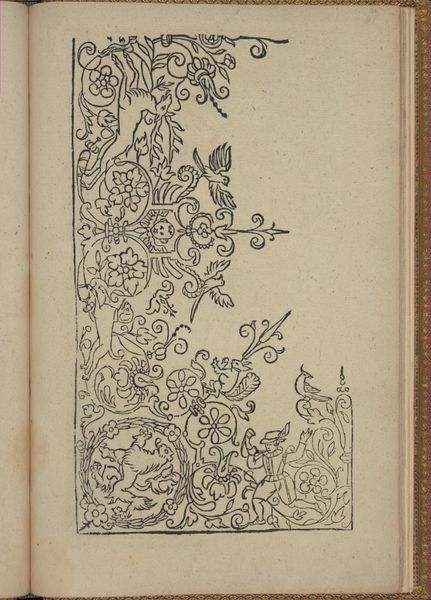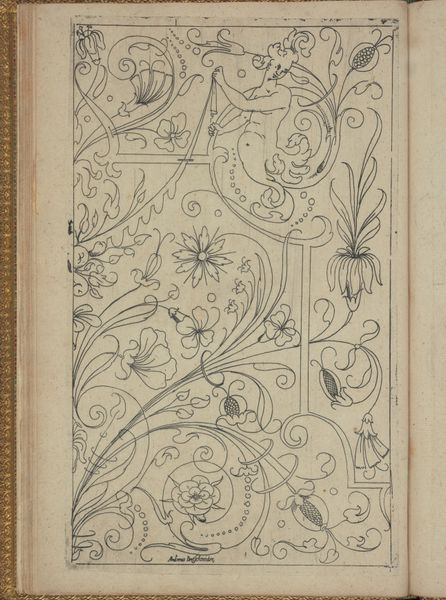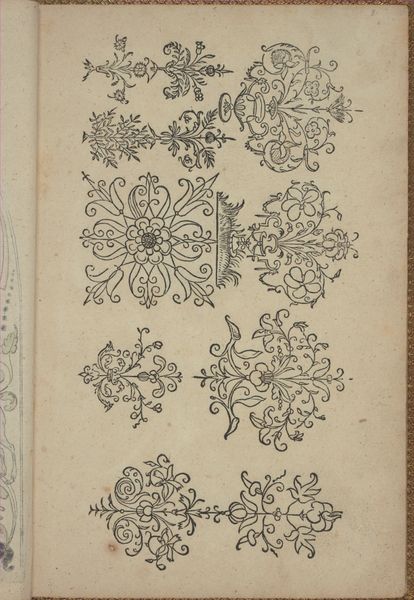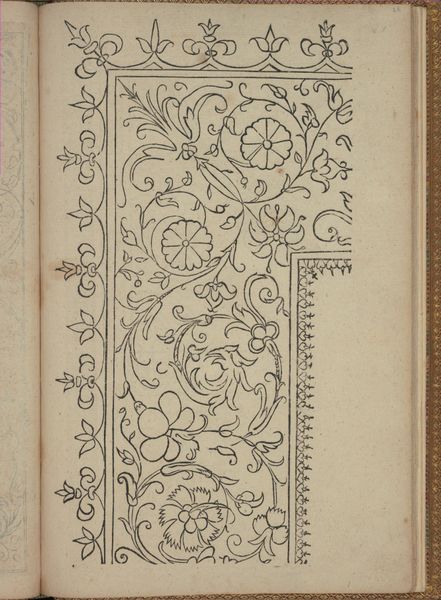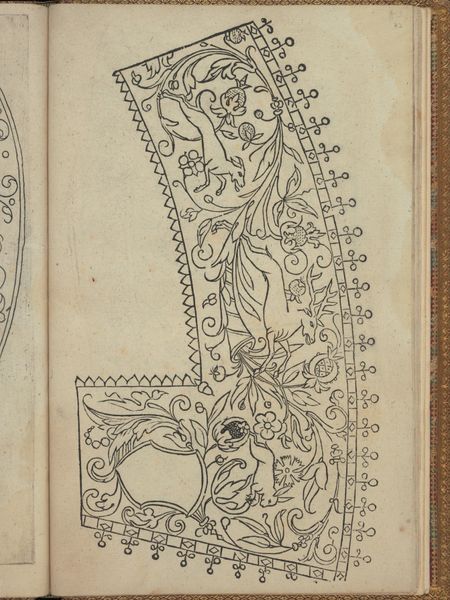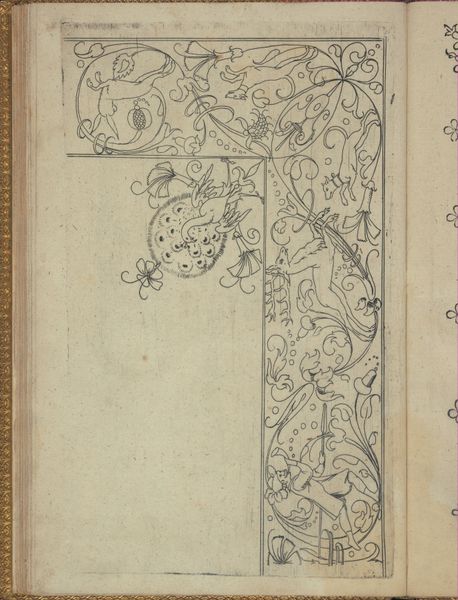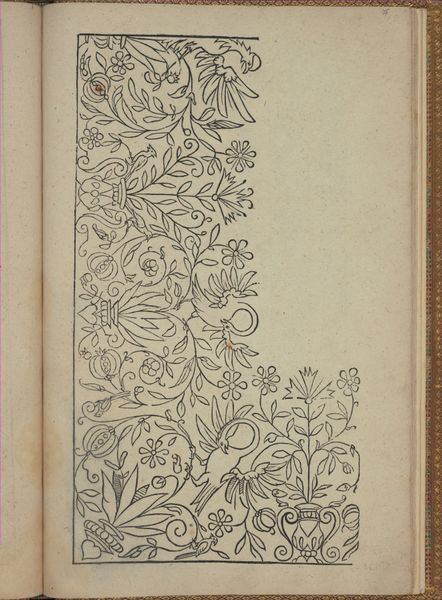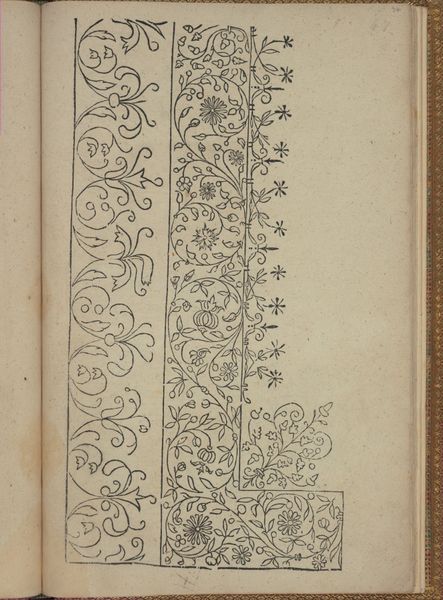
drawing, print, paper, ink
#
drawing
#
aged paper
#
toned paper
#
germany
# print
#
book
#
sketch book
#
flower
#
paper
#
11_renaissance
#
personal sketchbook
#
ink
#
coloured pencil
#
ink colored
#
sketchbook drawing
#
watercolour illustration
#
sketchbook art
#
watercolor
Dimensions: Overall: 12 x 8 1/16 in. (30.5 x 20.5 cm)
Copyright: Public Domain
Editor: So, this is a page, 47v, from Andreas Bretschneider’s "New Modelbüch," dating back to 1615. It’s an ink drawing on paper, and it’s lovely! The botanical studies feel so delicate and intricate, even for what's essentially a sketchbook. What can you tell me about its role historically? Curator: Well, pattern books like these were hugely influential. We see here how botanical drawing intertwines with design. Consider the burgeoning merchant class and craft guilds of the time. How do you think these books served their interests and shaped consumer tastes? Editor: I suppose artisans would use them as templates. Were they considered artworks in themselves, or purely functional? Curator: That’s a great question! It's tempting to see them merely as tools, but the very act of collecting, preserving, and displaying them in institutions like the Met elevates their status. Think about how museums influence our understanding of value and authorship. Does exhibiting it change how we view the work itself and Bretschneider’s role as an artist? Editor: Definitely. Seeing it framed and preserved gives it a sense of importance it might not have had originally. It also prompts you to look at it more closely. Were these pattern books only accessible to master artisans? Curator: Access would certainly have been stratified, linked to guild membership and wealth, affecting who could replicate and adapt these designs. This shaped economic power, determining who could profit from these new aesthetic trends. It gives an entirely new layer of context to the image of those flowers! Editor: Absolutely. I came in thinking about pretty drawings and now I am seeing a history of class, labor, and access. Curator: Precisely! Art's power lies not just in the object itself, but in the social forces that shape its creation, dissemination, and reception.
Comments
No comments
Be the first to comment and join the conversation on the ultimate creative platform.
